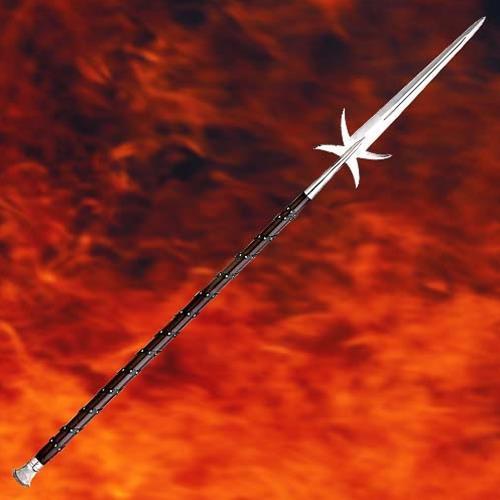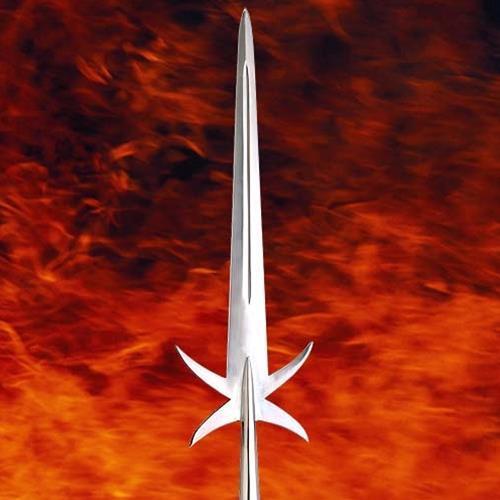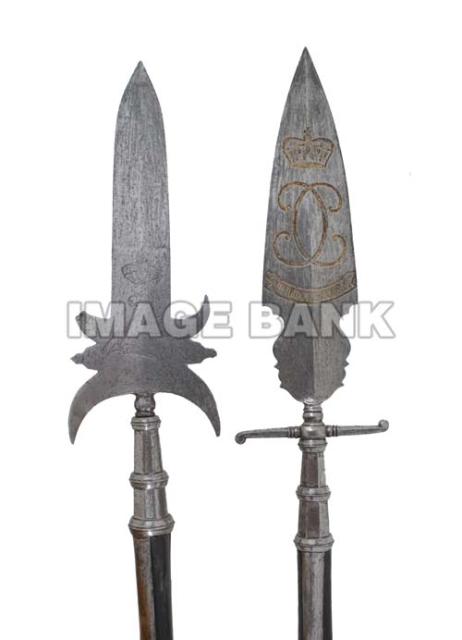| David W. Hughett wrote: | | Victor R. wrote: | | David W. Hughett wrote: |
The one on the left seems a fairly close analog to the MRL weapon that I referenced, with forward and rearward projections. The horizontal ones seem useless to me, though. I would think that a more practical feature would be a much more substantial, sharp-and-pointy horizontal spike. Now, that would be deadly! |
I was initially thinking the horizontal lugs could be seen as more of a decorative element, but, considering things further, with the curvature of the upper and lower projections, a weapon parried between them might not catch, but slide down one curve, along the other, and then back towards the wielder of the partizan/spontoon. The momentum of the attack might be checked, but sharp injury or death could still be coming your way! To me, the central, horizontal lug would seem to be a measure against that type of slide, and allow for a full catch, truly braking the momentum of the other weapon. I don't know if there would be enough bite and torque to damage or break the other weapon (unlikely in my mind unless it was poorly made or already somewhat damaged), but I think the design would give the user of the weapon a greater ability to staunch and repel his opponent's attack and consider his next move.
No, I haven't fought with anything of the like - just my own reasoning and applied logic based on what I've read and seen elsewhere. Hopefully some actual practitioners can chime in on my speculation.
As for your comment on a horizontal spike, I don't know about the sharpened element, but if you search the "historical arms" section, you will find a couple of threads on a very large pole arm that I believe was classified as a glaive, but with a substantial crossguard rather than a rondel and a very long, acutely pointed and tapered blade - picture a type XVIIIb blade similar to the Albion Munich, but in type XVIII (single hand) length, mounted on 4' haft, and with a cross at least double the "standard" length (6", maybe somewhat more, on either side of the haft). The overall weapon, as I recall, was at least 7' long, and, I believe, Scandinavian in origin, but this is all from memory - it may just be that the individual that commissioned it was of Scandinavian origin! :) |
Fascinating! You certainly have an interesting perspective on the possible function of the horizontal lugs.
And I will have to take a look for the weapon that you mention as I have the time. Thanks for the comment. |
I found the thread, but I remembered the dimensions wrong - although I'm nearly certain I've seen another example somewhere along the way that more closely resembled what I described. Or, maybe I'm just running low on brain cells! :lol:
http://myArmoury.com/talk/viewtopic.php?t=124...ght=glaive |




